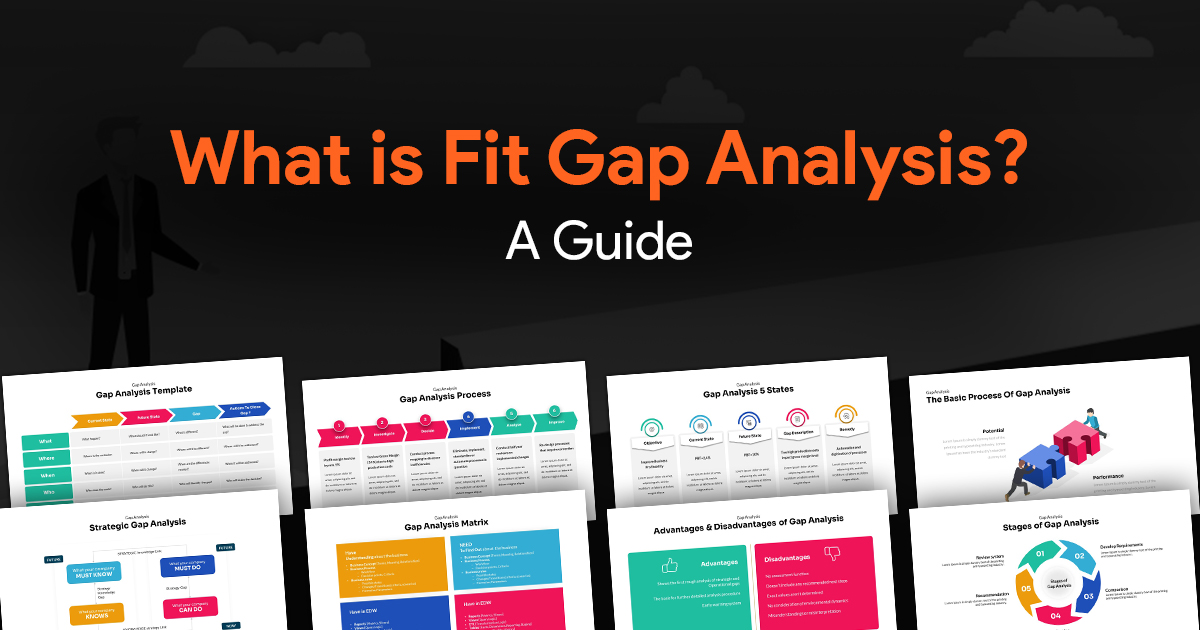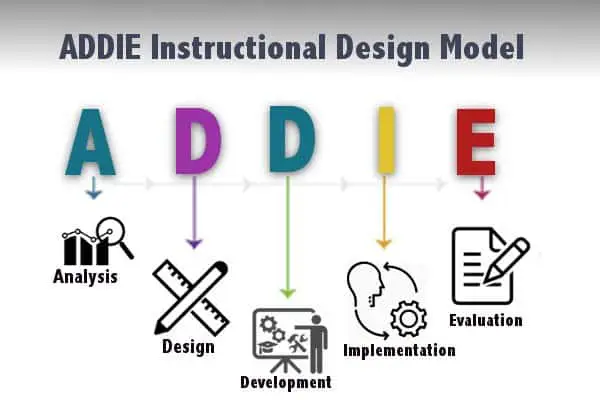SOAR Analysis – Concept, Model and Template
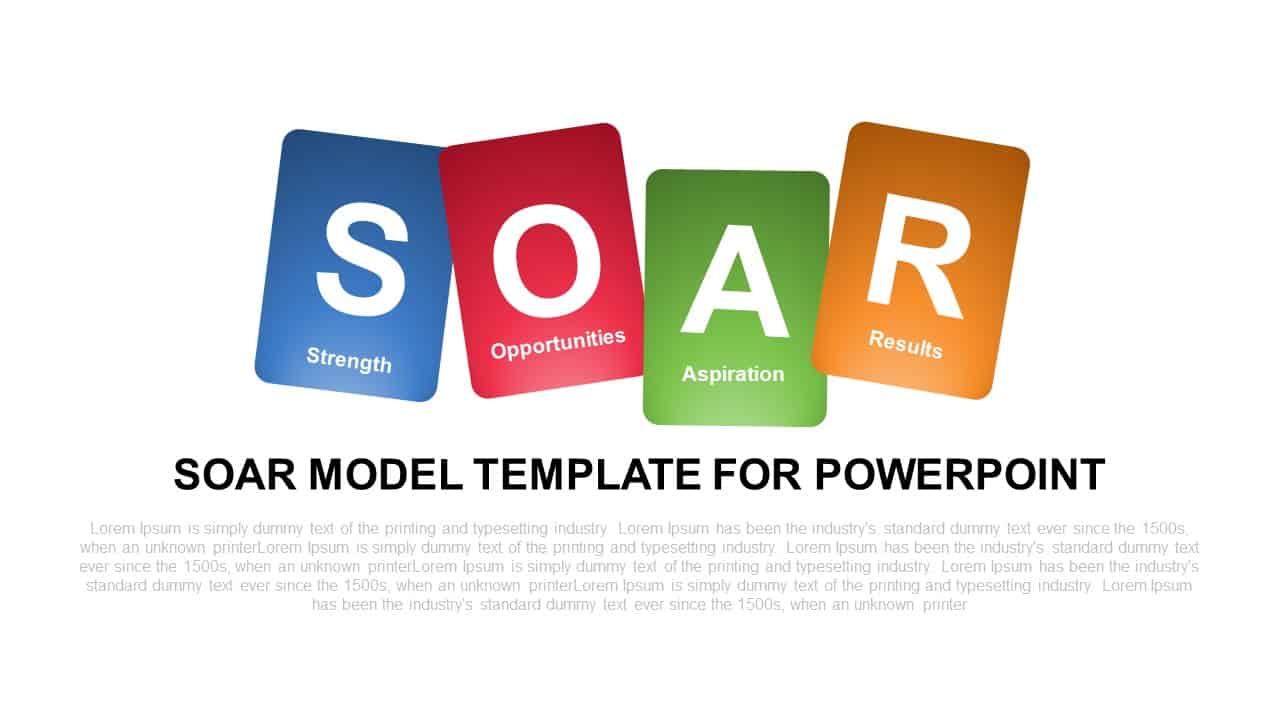
There are different types of tools and techniques to scale organizations or person’s existing and future conditions. These different strategic tools available for an organization, which help them in decision- making and deciding a way forward. SOAR analysis is a strategic planning method which benefits organizations emphasis on their current strengths and opportunities, and create a vision of future aspirations and the result they will fetch.
SOAR analysis explained
The acronym SOAR stands for strengths, opportunities, aspirations and results. It is a strategic tool used for analyzing organizations current strength and vision of the future for developing its strategic goals. There is some difference between commonly used SWOT (strengths, weaknesses, opportunities, and threats) analysis and the soar model. SOAR engages mainly on the functional areas of an organization, whereas SWOT focusing on a top-down approach. SOAR gives more emphasis on improving “what is currently done well”, rather than focusing on perceived threats and weakness.
When conducting a SOAR analysis, the fundamental questions to be answered are:
1. What is our strength?
2. What are our best opportunities?
3. What will be our preferred future?
4. What are the measurable outcomes that will tell us we’ve achieved that vision of the future?
How to use
• Step1. Identify the stakeholders who will participate, and define the format and frequency of the meeting. The delegates should represent all levels of the organization and all operational areas.
• Step2. Frame an interview questionnaire or a set for gathering data about strengths, visions, aspirations and effort-taking attitude or employees and key stakeholders.
• Step3. Participate, employees and stakeholders- including vendors, clients, and partners, if appropriate- to discover the conditions that created the organization’s greatest successes. Ask positive, powerful questions to make images of possibility and potential.
• Step4. Weakness, threats, or problems should not be ignored, but rather should be rescheduled. Questionnaire or interview should be focused on “what we want” rather than “what we don’t want”.
• Step5. Summarize organizations unique strengths, capabilities, resources and assets, which it is the positive core that run the organization still.
• Step6. Find out desired results and aspirations that produce a persuasive vision of the future using the best of the past and that also motivate and challenge the status quo.
• Step7. Identify the opportunity that has the most potential.
• Step8. Write goal statements for each of these strategic opportunities and find measures that will help track the organization’s success.
• Step9. Plan actions and execute the plan for each identified goal.
Definition of the SOAR
S = strengths: what an organization doing really well, including capabilities, unique features, assets, resources, and supreme accomplishments
O = opportunities: external environments that could enhance profit, unfulfilled customer needs, weakness or threats reframed into possibilities.
A = Aspirations: what the organization desires to be known for. And what the organization can be.
R = Results: the scalable or tangible items that will indicate when the aspirations and goals have been achieved.
Soar analysis looks at both present and future and is helpful for the organization to move forward. The strengths and opportunities are looking at the present whereas aspirations and results look towards the future and sow a way forward for the organization.
SOAR explored
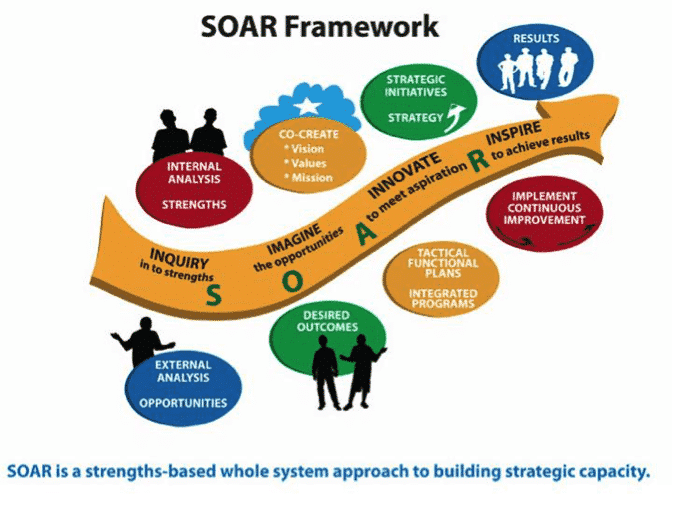
Strength in SOAR analysis
Every organization has its own strength zone. In soar framework the strength analysis of various factors in the organization which are working well for the organization and which are the main UNIQUE SELLING PROPOSITION of the organization. For instance, if we analyze TOYOTA, branding is one major strength of TOYOTA. Similarly, company goodwill in the market, the good number of employees, interventions in environmental issues is some of the other strengths of TOYOTA. Some of the questions which can be asked are:
• What makes difference us from our competitors?
• What are the USP’s of the brand?
• Where does the brand outclass beyond all others?
• What are the positives inherent in the organization?
Opportunities in SOAR analysis
From a company’s perspective, the second step of soar analysis is to examine the opportunities for the brand in the market. This may resemble the third step of SWOT analysis. By analyzing the external elements of opportunities, the organization acknowledges that there some existing opportunities which can be discovered by the organization and that is what the firm can quickly explore. Remember, opportunities can change as the organization grows.
To expanding the market to new geographical areas or aiming new market with innovative products are right examples of opportunity. Similarly, increasing branding and marketing, launching highly-competitive products are all examples of opportunities.
Some of the questions should be prepared regarding opportunities in SOAR analysis can be:
• Where we can expand our business from
• Where are our competitors creating their business from and are we lacking in that region
• What else do our customers want which we can provide
• What market or product can we develop further?
• Are we dropping customers in a specific area? How do we maintain them and improve our customer base?
Aspirations in SOAR Analysis
We all know that in strategy, mission and vision play a vital role. This is because they aid an organization known in early what they want to attain in the very long term. While mission might be short term – 4-5 years, vision is the very long term and is seldom changed. Similarly, there are aspirations for the organization, which are like the mission statement and can be changed from time to time but must be there at least for a short duration before they are attained. Aspirations deal in the short term achievable wants of the organization and might include long-term wants of the company as well. You can include the following questions to identify aspirations:
• What do we care intensely about so that we would try to realize it?
• What do we want to attain for our business and where do we want to see it?
• What benefits can we bring to our customers so that our customers are joyful?
• What does our future look like presently and how do we want to change that?
Results in SOAR analysis
Organizations goals and aspirations are determined by the results. So, results should be measurable, achievable specific and time-related. Whether the goals are achievable or not, when it can be realized, these types of questions only get answers on the basis of results. In SOAR analysis, you need to sketch the ways to achieve results and what will be the common factor which will show that the result has been accomplished. For example, a new internet search engine decides that it wants even further market penetration and wants more users on board its platform. This is an aspiration of the new search engine. How will they convert this into results? It can launch Email service and attract a million users with new unique features. Then it can launch an innovative GPS and attract even more users. Then it can launch online banking App and achieve its target result.
Some questions which can be asked to fix the results in SOAR analysis are;
• What are the statistics we require to track to assess our progress?
• What is the best result across multiple departments to know that the goal is on the way
• What assets will be needed to realize the results that we have stated?
• How do we adjustment our aspirations to results to achieve our goals and describe our strategy?
Why do a SOAR analysis?
SOAR analysis can bring stakeholders together to recognize the potential of the organization and make a collective vision of the future. Strength building process needs less effort and resources than correcting the weakness of the organization. The technique is more action-oriented than a SWOT analysis and is focused on outcomes. Use the SOAR model to:
• Explore new initiatives
• Develop a strategic plan during annual strategy reviews
• Focus and readdress efforts and resources
• Use as a part of leadership development programs
• Outline career growth plans
• Analyze and compare with competitor
Difference between SOAR analysis and SWOT analysis
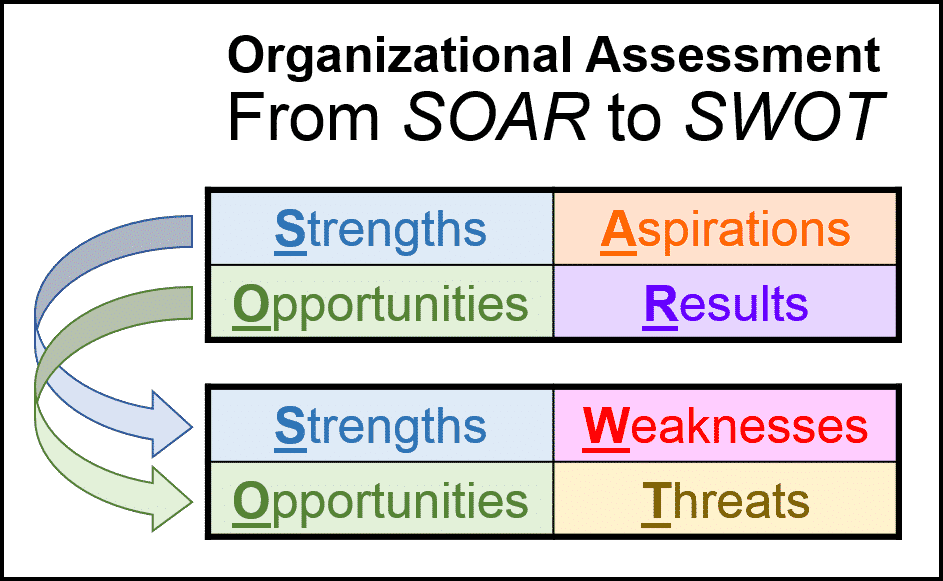
Both strategy tools have its relevance in different contexts. However, SWOT analysis covers more area than the SOAR model. SOAR analysis is mainly focused on internal elements with the exception of Opportunities. This shows that SOAR analysis is more of an internal strategy exercise for the organization rather than looking out towards the business environment and making the strategy. SWOT analysis is more frequently used for an organization in real markets. But if a firm wants to make a vision statement or a mission statement, and then SOAR analysis can be very supportive. Hence, SWOT looks more effective than the SOAR analysis.
The simple reason being, SWOT helps you identify your weaknesses. If a student wants to improve himself at a professional level, he cannot do that without accepting the weaknesses that he has. Similarly, SOAR analysis does not examine the weakness or threats of the organization faces. These are actual action points for any company. Hence, SWOT analysis can be rated more effective for an organization’s strategic analysis.
Note: The duration required for soar analysis will vary according to the vastness of your organization. However, it’s likely to set the scene, brainstorm, and prioritize within 45 minutes. You can develop an initial action plan within 30-60 minutes.
